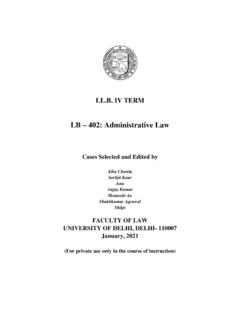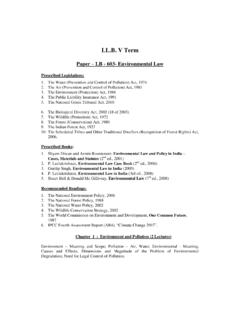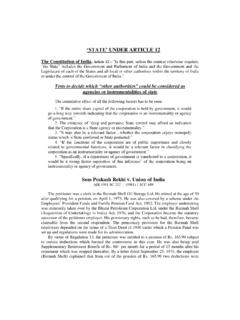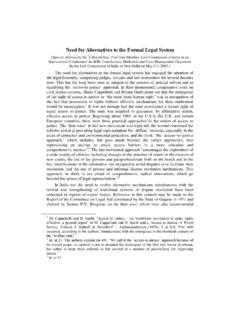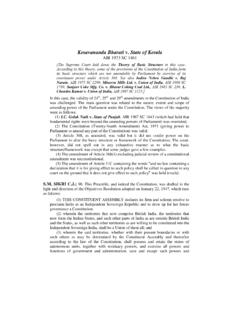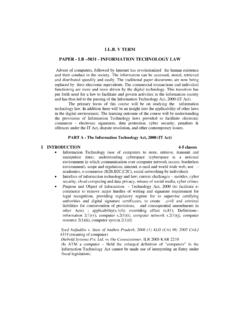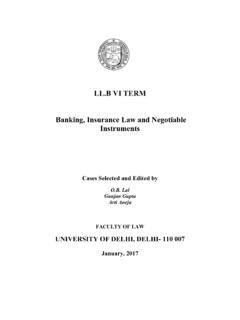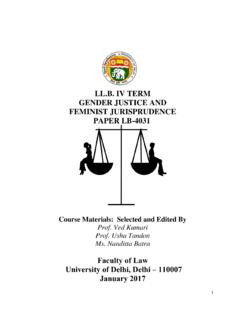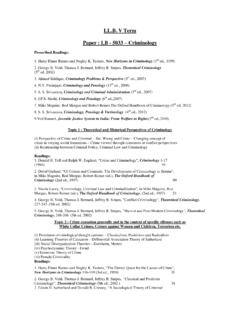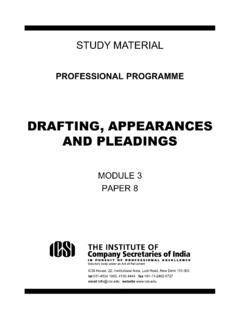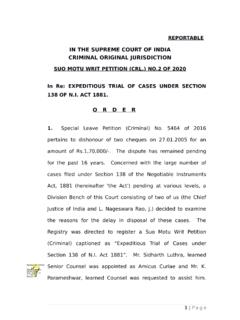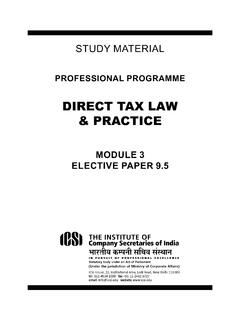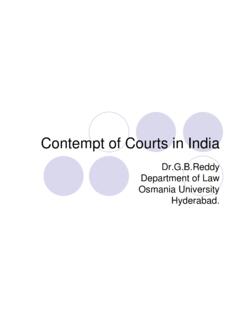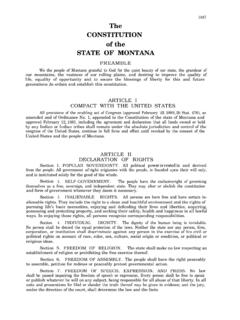Transcription of DRAFTING RULES & SKILLS - Faculty of Law, University of Delhi
1 1 DRAFTING RULES & SKILLS DRAFTING in its general connotation means, putting one s own ideas in writing. DRAFTING of any matter is an art. DRAFTING of legal matters requires greater SKILLS and efficiencies. It requires thorough knowledge of law, procedure, settled judicial principles, besides proficiency in English Language. A perfect DRAFTING of matters in relation to Suits, Applications, Complaints, Writ petition, Appeals, Revision, Reviews and other such matters connected therewith shall obviously leads to good result in terms of money, time, energies and expectation of not only the learned members of the Bench, but also the Bar as well as the parties to the litigation.
2 It creates a congenial atmosphere where the glory of the judiciary and the Law grows to sky-heights. So in the case with regard to the DRAFTING of Deed of Conveyancing. DRAFTING , Pleadings and Conveyancing (DPC) is made as a compulsory practical subject study forming part of the curriculum of the Law Course in India. It envisages, inter alia, DRAFTING of Civil Pleadings; Criminal complaints and other proceeding; Writ Petition, Appeal-Civil, Criminal and Writ; Revisions-Civil and Criminal, Reviews, Writ Appeals-Civil and Criminal, and also Special leave Petition; Contempt Petition, Interlocutory Applications, etc.
3 A student who acquires the requisite knowledge, perfection and proficiency in DRAFTING of these matters, shall undoubtedly become a perfect legal professional. He will be an asset in the legal world. History of Pleadings The method of arriving at an issue by alternate allegations has been practised in the civilized countries from earliest times. The art of pleadings apparently is as ancient as any portion of our procedural law. In ancient India it certainly existed but not in the present form.
4 The art of pleading is also traceable in substantially the same in form in England in the days of Henry II. The issue is found in the year, , in the first year of the reign of Edward II. It shows that the art of arriving at an issue was not only practised during the reign of Edward II but had been practised even before for an issue had not been only the constant effect, but the professed aim and the object of pleading . At first the pleading were oral. The parties actually appeared in person in open Court and oral altercation took place in the presence of the judges.
5 These oral pleading were conducted either by the party himself or by a person who was an eloquent orator and well versed in Dharma Sastras and Koran whom people generally called Pandit and Maulvi in ancient and medieval India respectively. In English countries such person was called narrator and advocates before the adoption of this present lawyers institution. The Pandits, Maulvis and narrators helped Kings and Judges in the administration of justice in those days. The duty of the King and the judge was to superindent of moderate the oral contentions conducted before him.
6 His aim was to arrive at some specific point or matter affirmed on the one side, and denied on the other, which they both agreed was the question requiring decision; on resulting this the parties were said to be at issue and the pleading were over. The parties, then, were ready to go before a jury if it were an issue of England. In those days the judges were very strict and they never allowed more than one issue in respect of each cause of action. 2 When a defendant more than one defence to the plaintiff s claim he had to elect one out of the defences.
7 Since the reign of Queen Victoria the parties were allowed to raise more than a single issue, either of law or fact. During Viva voce altercation an officer of the court was busy writing on a parchment roll an official report of the allegation of the parties along with the act of Court which together was called record. As the suit proceeded similar entries were made from time to time and on the completion of the proceedings, the roll was preserved as perpetual judicial record. When each pleader in turn started borrowing parchment roll and entered his statement thereon himself, the oral pleading fell into disuse on thus obvious defect.
8 Later, with the development of print machinery, paper etc. the method of drawing up the pleading on the plain paper and their interchange between parties started and this happened probably in the reign of Edward IV. The Judicature Act 1873 in England brought in many reforms in the realms of pleading like which with frequent changes are still in force. The modern Indian law of pleading like any other law is based on English system and the whole law civil pleading is governed by the Code of Civil Procedure which lawyer has to master over for the thorough knowledge of practice and procedure required in a civil litigation.
9 Meaning of Pleadings Pleadings are the statement of facts in writing drawn up and filed in a Court by each party to am case stating therein what his contention shall be at the trial and giving all such details as his opponent will need to know in order to prepare his case in answer. In India there are only two pleading in a suit as defined under Order 6, rule 1 of the Code of Civil Procedure, it says that pleading means Plaint or Written Statement . This definition is not very clear in itself. The plaint and written statement are defined in the following clauses: (a)Plaint: A statement of claims, called the plaint in which the plaintiff sets out his cause of action with all necessary particulars; and (b)Written Statement: A statement of defences, called the written statement which the defendant deals with every material fact alleged by the Plaintiff in the plaint and also sets any new facts which tells in his favour, adding such objection as he wishes to take to the claim.
10 Beside the plaint and the written statement, order pleading that may be filed, may be classed under two heads: (i) subsequent pleadings, and (ii) additional pleadings. (i)Subsequent Pleadings: The only subsequent pleading which is filed as a matter of right, without the leave of the court, is a written statement of a plaintiff by way of defence to a plea set-off set up by a defendant in the written statement of his defences. No other pleading subsequent to the written statement of a defendant other than that by way of defence to a plea of set off can be presented except with the leave of the court and upon such terms as the court may think proper.
